50+ Investigation Questions for Hostile Work Environments
Every workplace complaint has the chance of becoming a lawsuit. The best way to make sure this doesn’t happen is to ask the right questions. Here are over 50 investigation questions for getting to the bottom of hostile work environments.

When someone files a complaint regarding a hostile work environment, the employer must investigate. The complaint could be about harassment, discrimination, retaliation, safety, or even the ethics of the company.
Even if the reported incident seems trivial, the situation must be thoroughly analyzed. The employer must investigate complaints regardless if the complainant wants an investigation to take place or not.
To conduct a proper, thorough, and fair investigation, the selected investigator needs to ask the right questions to the right people. An investigation with the right questions will yield the best information and evidence. It will also enhance both the investigator’s and the employer’s credibility.

This helps ensure that the employer gets to the truth. Once the employer knows the truth, they need to take any corrective actions required to ensure illegal situations stop immediately.
Every complaint has the chance of becoming a lawsuit. The best way to make sure this doesn’t happen is to ask the right questions. Here are over 50 investigation questions for getting to the bottom of hostile work environments.
What is a hostile work environment?
The truth is, many people aren’t aware that their work environment is toxic, hostile, abusive… basically an environment that shouldn’t exist. Luckily, there are several laws to protect people from these workplaces.

The U.S. Equal Employment Opportunity Commission (EEOC) is responsible for enforcing the following laws…
- Title VII of the Civil Rights Act of 1964
- The Age Discrimination in Employment Act of 1967 (ADEA)
- The Americans with Disabilities Act of 1990 (ADA)
- Occupational Safety and Health Act (OSHA)
- Sarbanes-Oxley Act
According to the law, a hostile work environment occurs when harassment and abuse are pervasive enough to create an intimidating environment. It is any unwelcome action targeting someones…
- Race
- Skin color
- Religious affiliations and beliefs
- Sex status
- Sexual orientation
- Gender identity
- Pregnancy status
- Place of national origin
- Age (beginning at the age of 40)
- Disability status
- Genetic information
- Family medical history
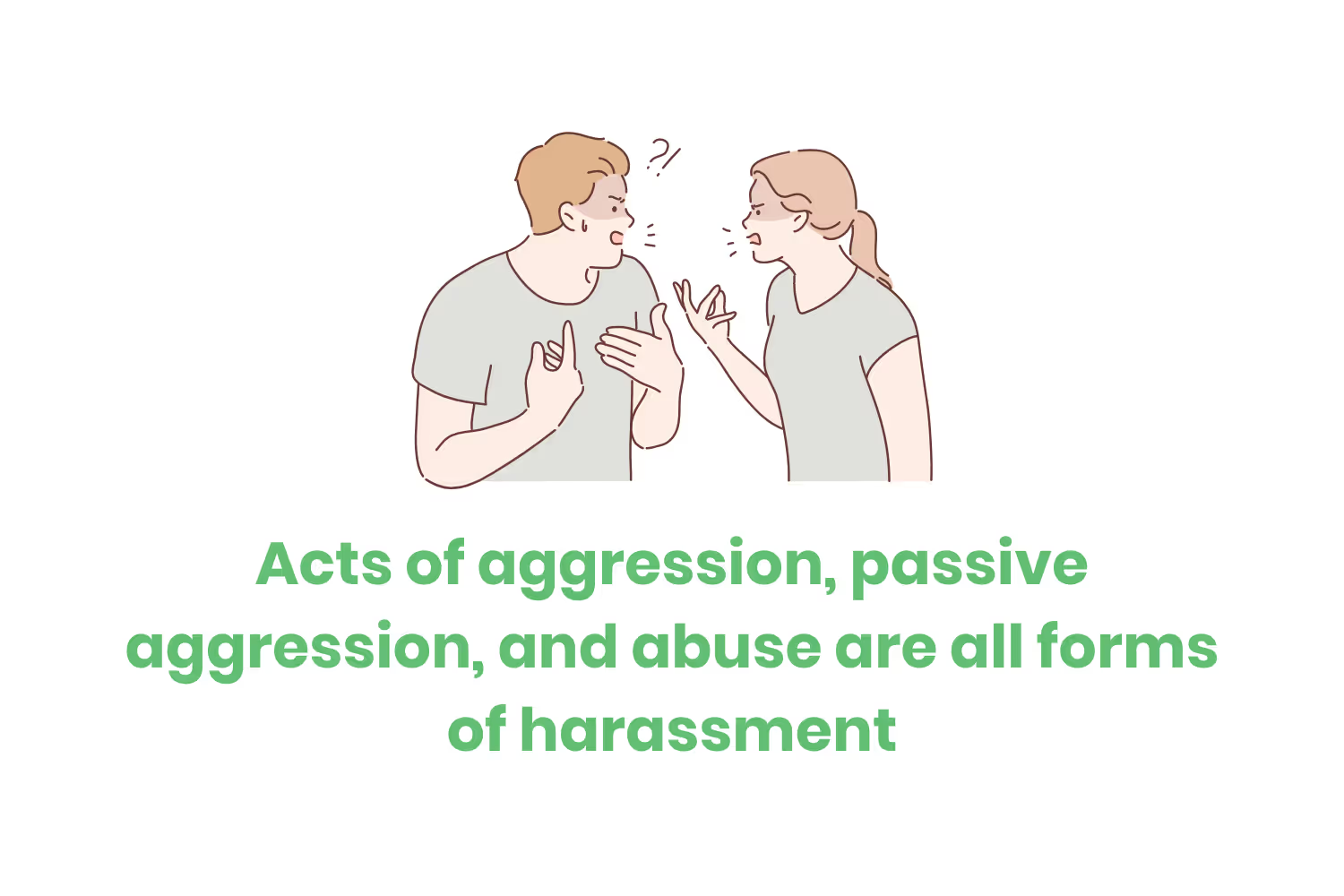
Acts of aggression, passive aggression, and abuse are all forms of harassment. These acts become illegal where…
- Enduring the behavior becomes a condition of continued employment
- Or, the conduct is severe or pervasive enough to create a situation that any reasonable person would agree that the workplace environment is intimidating, hostile, or abusive
Anti-discrimination laws like the ones mentioned above prohibit harassment against people in retaliation for…
- Filing a lawsuit related to the hostile work environment
- Participating in an investigation, proceeding, or lawsuit
- Testifying in court about the harassment
- Opposing employment practices that they reasonably believe would discriminate against individuals in violation of the law
To become unlawful, an average person would need to agree that the situation constitutes intimidating, hostile, or offensive behavior. Therefore, petty slights, annoyances, and isolated incidents don’t constitute a hostile work environment.
Conduct in a hostile work environment could include offensive jokes, slurs, epithets, physical assaults or threats, intimidation, ridicule, mockery, insults, and offensive objects/pictures. It’s any form of conduct that may cause significant interference with work performance.
Warning Signs of a Hostile Work Environment
There are quite a few typical signs that a workplace has a toxic environment: discrimination, sexual harassment, intimidation, and poor facilities.

One of the most evident and major signs of a hostile work environment is discrimination. When one colleague treats another employee differently because of their age, sex, gender, race, religion, or any other type of protected minority status. Someone facing discrimination can affect an employee’s day-to-day tasks. It can even limit someone from moving forward in their career.
Sexual harassment is another common sign that something’s wrong with the environment in the workplace. It can occur in many forms, such as inappropriate behavior with sexual connotations, innuendos, and inappropriate physical contact. In the modern world, technology also allows for sexual harassment to occur in the form of texts, emails, and digital images.
Intimidation in the workplace can be physical or verbal. If a boss intimidates a subordinate, it can affect their work performance and jeopardize their position in the company. If an employee intimidates a coworker because they could both get a promotion, this could constitute illegal conduct. This scenario falls under the “intimidation” category of a hostile work environment and also under the “unhealthy competition” category. Not only does intimidation affect someone’s day-to-day work, but it also affects their self-esteem and even their health.
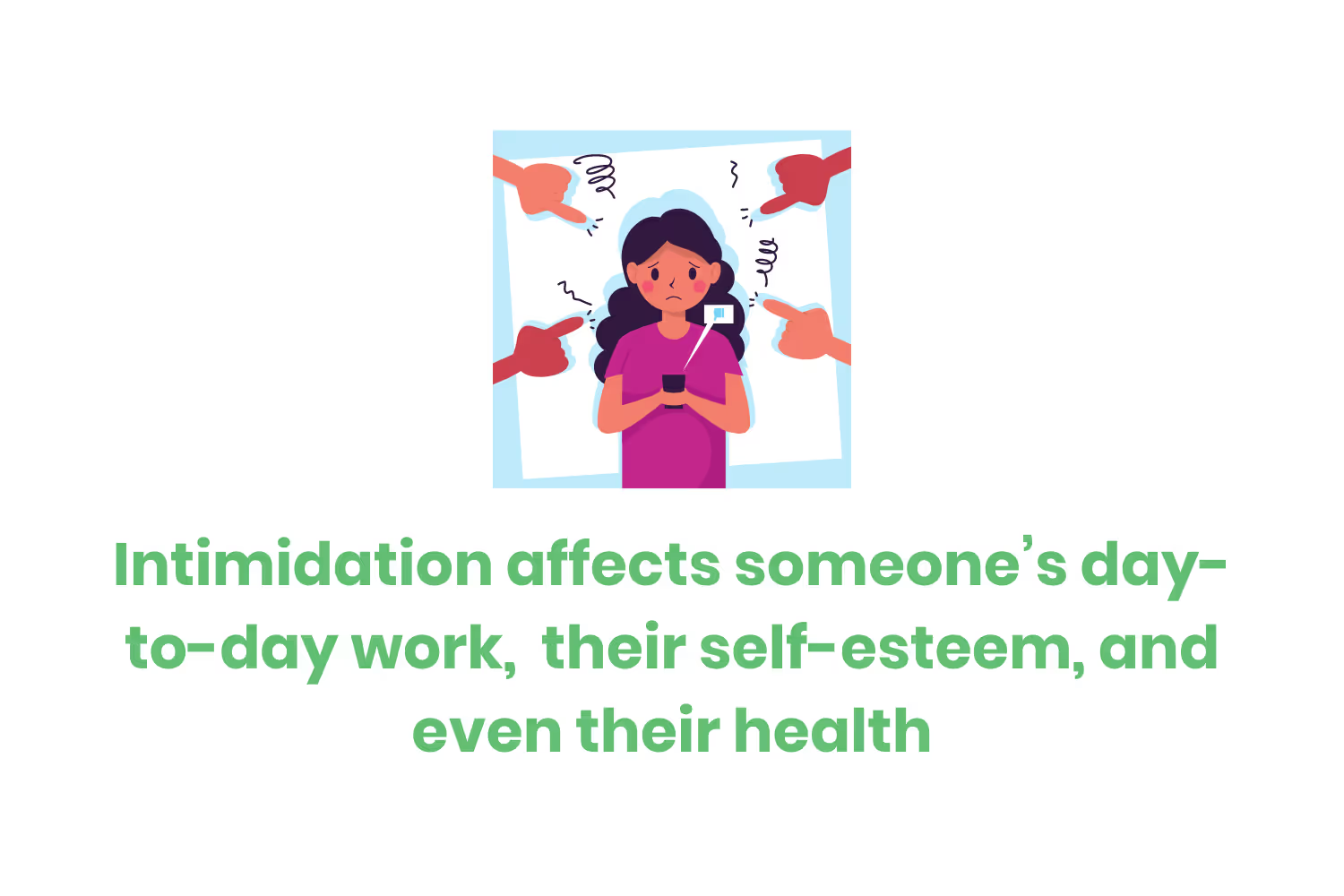
Failing to provide the workforce with the right equipment can also create a hostile work environment.
If there is poor lighting, lack of furniture, lack of ventilation, poor sanitary facilities, few breaks, or unreasonably long hours… employers could be the perpetrator of the hostile work environment. If someone forces an employee to handle dangerous materials without proper protective measures, then that work environment is also hostile.
Standard Investigation Procedures
According to SHRM, some standard investigation procedures can help ensure the success of the investigation.
An employer has a legal obligation to protect the confidentiality of any claims about harassment and other illegal activity. However, the employer needs to conduct a prompt and effective investigation. It may not be possible to keep all information gathered during the interviewing process to stay completely confidential.

The employer should explain to the person filing a complaint that any individuals involved in the investigation will try to keep the information as confidential as humanly possible. The complainant should also know that during the investigation, they may need to share some information on a “need to know” basis.
Another important procedure is the process of selecting the investigator. A good investigator should have the following qualities...
- Investigate objectively without bias
- Have no stake in the outcome
- The outcome should not directly affect the selected person’s position within the organization for conducting the investigation
- Have no personal relationship with the involved parties
- Prior investigative knowledge
- Have some working knowledge of employment laws
- Strong interpersonal skills
- This is to build a rapport with the parties involved
- Attention to detail
- Even temperament to conduct interviews
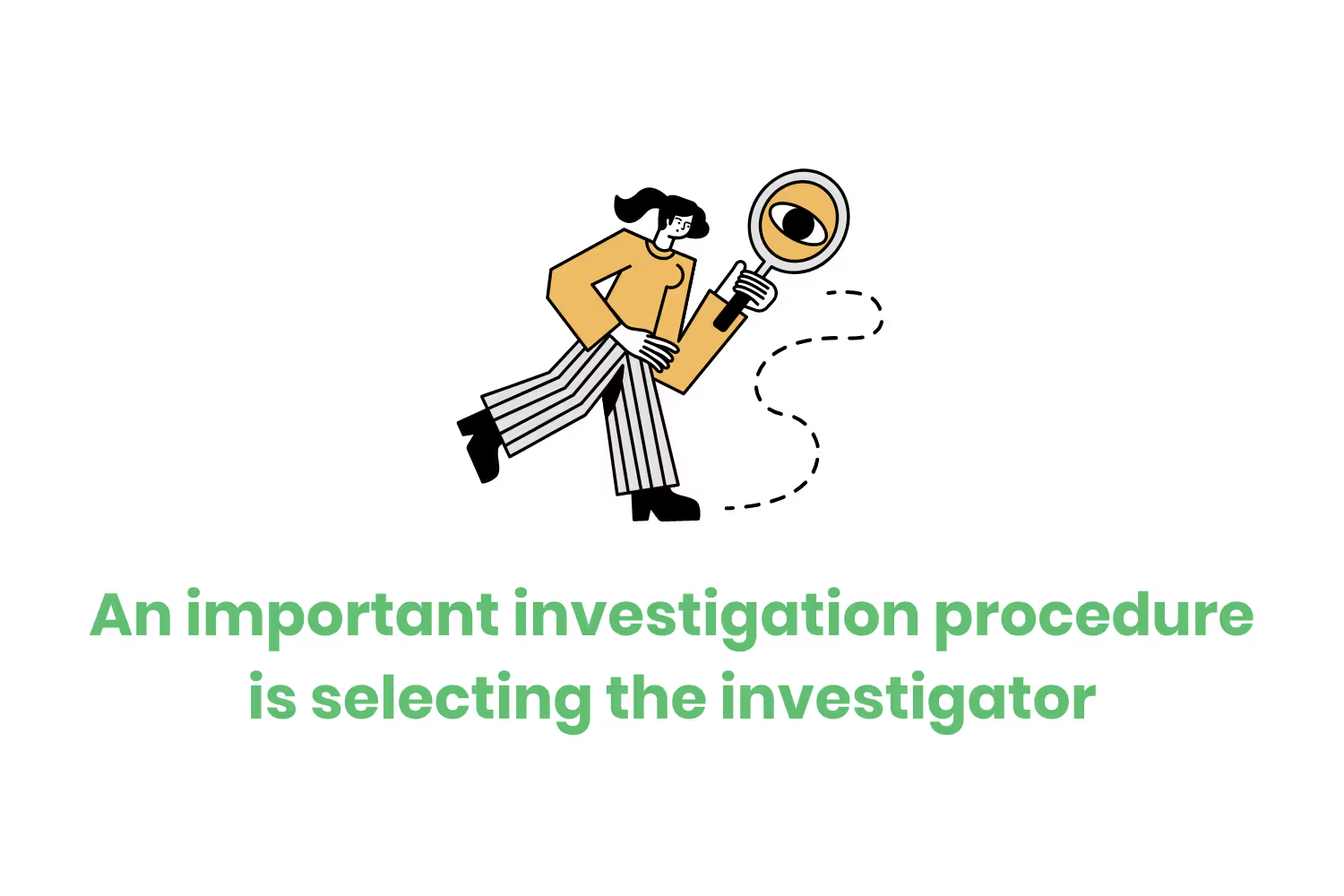
This investigator could be a member of the human resources department or internal security. An outside person who doesn’t practice law or a third-party investigator is also a good choice.
Once you develop a plan about how and when you will conduct the interviews, an investigator needs to develop their interview questions. The next section will provide you with some investigation questions for hostile work environments.
Interviewing Employees
To get to the bottom of a situation, you need to do some investigating. In a nutshell, someone needs to dust off their detective hat and talk to everyone they can to get to the truth.
The interviewees in a harassment case include the person who filed the complaint, the alleged victim, potential witnesses, confidants, and the alleged perpetrator. It’s important to note that the person who filed the complaint may have simply witnessed the ordeal and was not the target of the harassment.
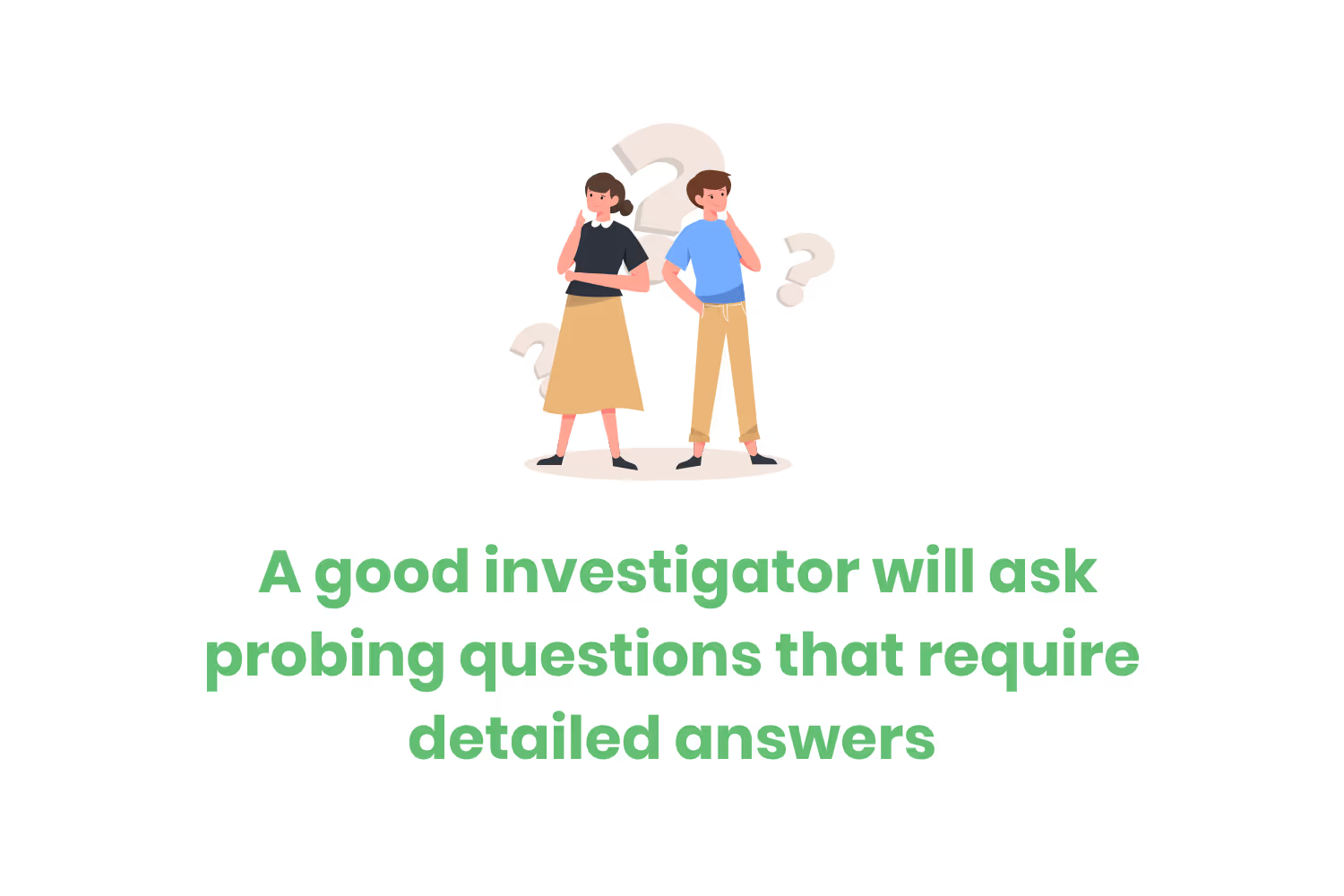
All investigators have some standard questions during the interview process. However, to be effective and efficient in getting to the bottom of the problem, a good investigator will ask probing questions that require detailed answers. Based on the replies received during the interview, the truth of what happened will come out.
Baseline Questions
Baseline questions in a hostile work environment investigation help establish a relationship with the interviewee. While making pleasantries, the interviewer can establish a baseline for mannerisms, speech patterns, eye contact, and body language.

Some questions to establish a baseline include…
- What’s your name?
- Where do you currently live?
- How old are you?
- Do you have any pets?
- How long have you worked at the company?
- What is your position in the company?
- How long have you been in the position?
By asking baseline questions, the interviewer may gain insight into whether the interviewee is lying or telling the truth about more pointed questions about the complaint. Using the questions above, the interviewer can assess the differences in mannerisms when the interviewee answers each question related to the events that transpired.
Questions for The Complainant(s)
The first person to interview is the person or people who filed a complaint. A business needs to take the report filed about a hostile work environment very seriously. No matter how trivial the claims or complaints may seem, an investigation needs to take place.

Here are some questions to ask someone who filed a complaint.
- In your own words, describe what transpired concerning the complaint you filed.
- When did this take place?
- Date, time, and duration.
- Did you indicate any feelings of being uncomfortable, displeased, or offended during the incident?
- Is this the first time this happened?
- If the answer is no, ask the interviewee:
- Has there been any other incident involving this person?
- How many times did this happen?
- Did anything else happen in the past?
- Please describe when, where, and what happened in prior instances.
- If the answer is yes, then continue.
- If the answer is no, ask the interviewee:
- How did the incident(s) occur?
- Did anyone see this happen?
- If the answer is yes, ask the interviewee:
- Who saw this happen?
- Did they do or say anything to you about what happened?
- Do you know what they did following the incident?
- If the answer is yes, ask the interviewee:
- Was there any physical contact?
- Describe what they did.
- Demonstrate what happened if capable.
- What did you do and say during the incident?
- How did the other person react?
- What did you say or do after the incident?
- Did you report this incident to upper management?
- If the answer is yes, ask the interviewee…
- When did you make this report?
- Who did you make the report to?
- If the answer is yes, ask the interviewee…
- Do you know of anyone else who might have also reported the incident?
- Did you seek any medical treatment or counseling as a result of the incident?
- Is there anyone who can verify that what you said thus far is true?
- Is there anything else you would like to add?
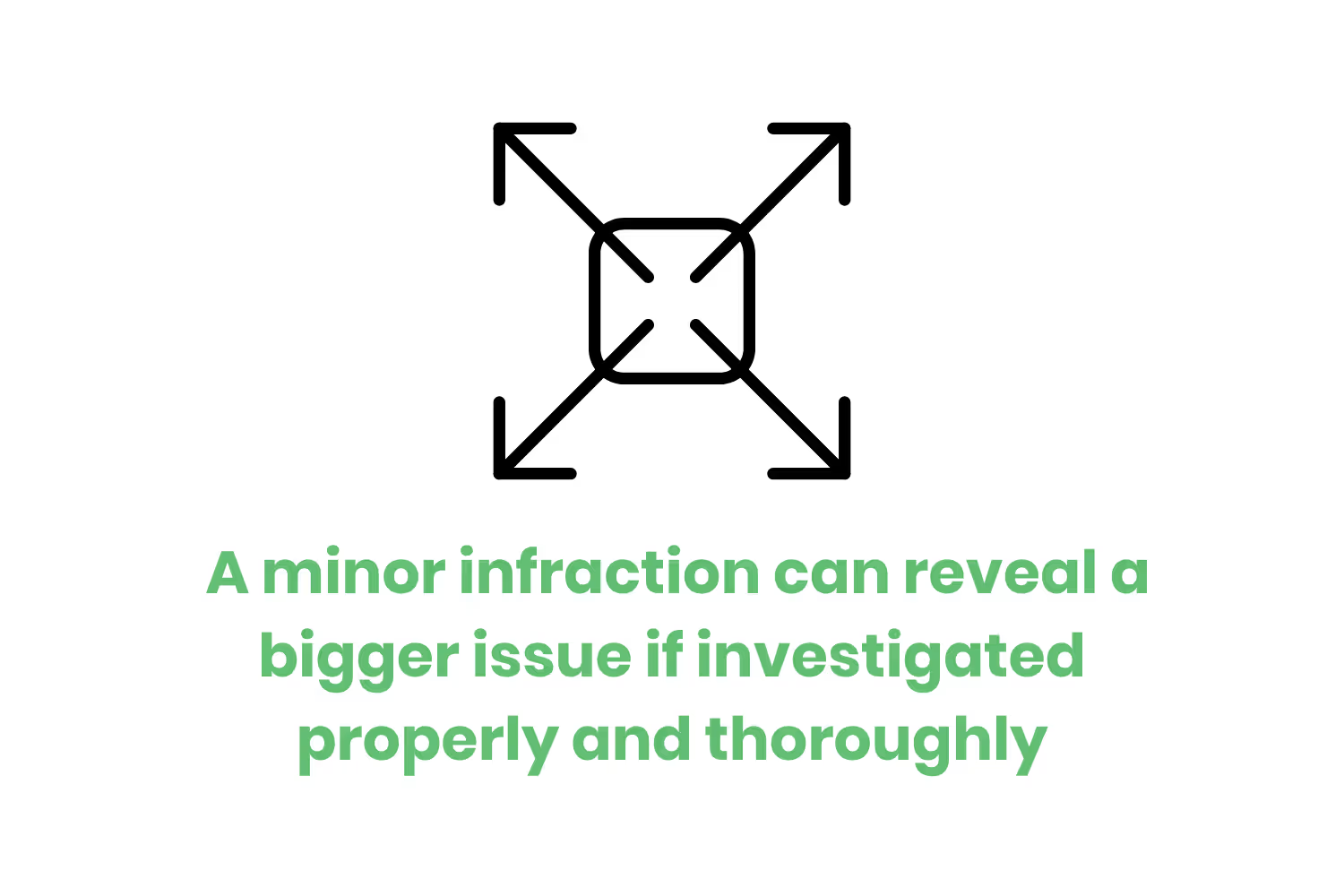
In most cases, a minor infraction can reveal a bigger issue if investigated properly and thoroughly. So, even if someone reported a small infraction, it’s important to interview the person thoroughly in case they are afraid to mention more obvious infractions in their report.
Questions for The Witness(es)
If the person who filed the complaint identifies a witness of the incident, interviewing those named is the next logical step. These are people who can corroborate or refute anything about the complaint or the subject’s account of the incident.
There’s another reason why it’s important to interview a witness. Witnesses can provide crucial information that the complainant didn’t talk about or was too afraid to discuss.
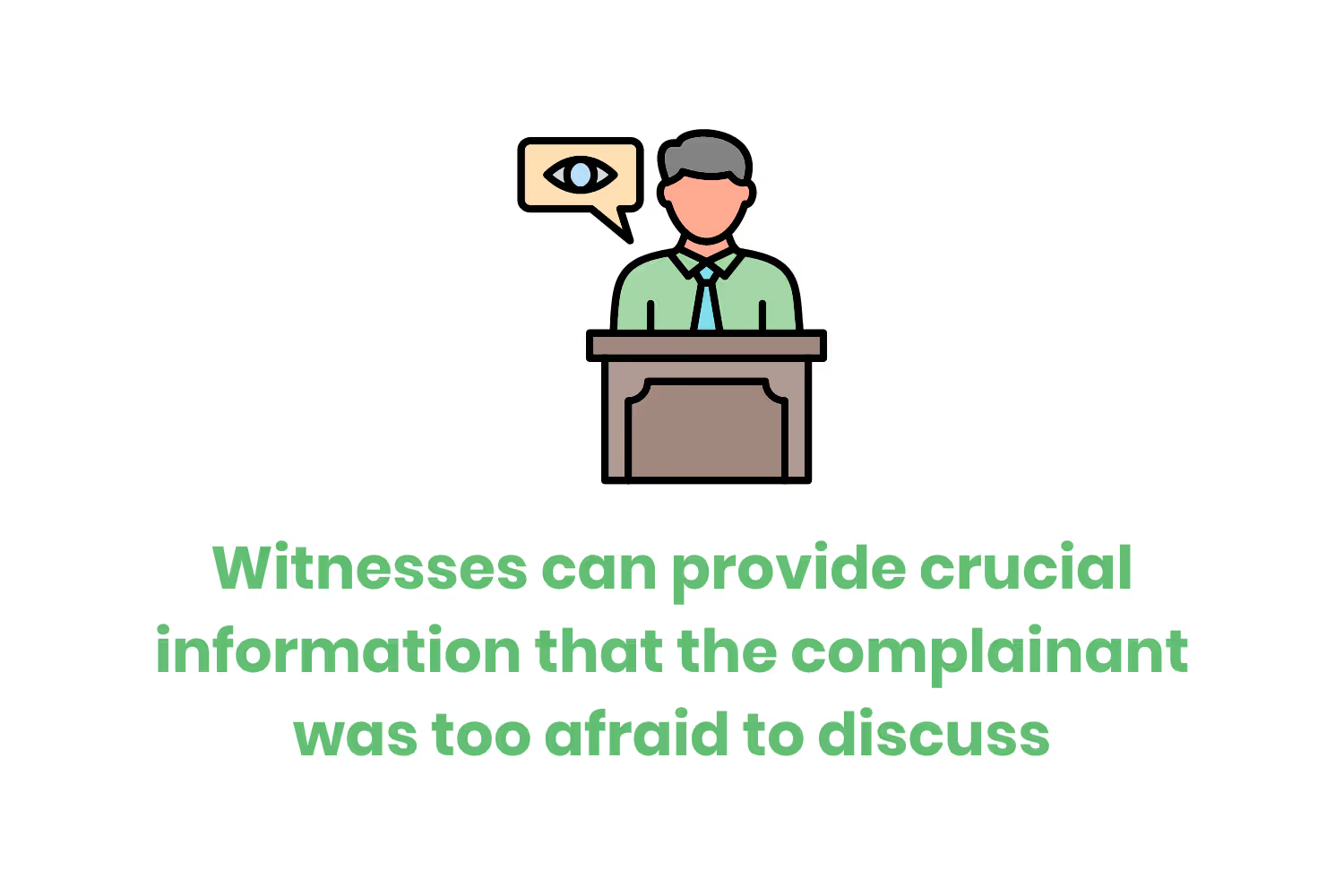
Investigation questions include…
- Did you see or hear anything concerning the workplace environment?
- When did the incident occur?
- Date, time, and duration.
- Where did the incident take place?
- Who did what to who?
- Was there anyone else involved?
- What did each person say in the incident?
- What did you do or say about what transpired in front of you?
- Was anyone else there to witness the incident
- How did the complainant react concerning what you witnessed?
- How did the alleged perpetrator react to what you witnessed?
- Did you report the incident?
- If yes, ask the interviewee…
- When and to whom did you make the report?
- If no, ask the interviewee…
- Why not?
- If yes, ask the interviewee…
- Did you tell someone about the incident?
- Who did you confide in?
- Do you know why this event transpired?
- Is there anything else you think we should talk to?
- Do you know if the perpetrator was ever involved in such an incident before?
- If yes, ask the interviewee…
- What other situations do you know about?
- What happened in these situations?
- Where and when did this take place?
- Who was the victim?
- If yes, ask the interviewee…
- Is there anything else you would like to add?
Witnesses can vary. Some people saw the incident take place, those who heard about it from the witnesses, and those whom the complainant confided about the incident after the fact.

No matter which kind of witness you interview, you need to interview them. After all, the more people corroborating or refuting an alleged hostile work environment, the more likely the business will make the correct decision about the situation.
Questions for The Alleged Harasser(s)
When it comes to interviewing the alleged harasser, the best thing to do is to remain neutral. Whatever the complainant and/or witnesses told the investigator should not influence the questioning process. There should not be any signs of the investigator judging the accused of the alleged harassment.
The questioning process of the alleged harasser should start with the following…
- In your own words, what happened on (the date of the alleged incident)?
This question may lead to a variety of answers. When investigating the alleged harasser, the employee will choose one of two options: admit to what happened (if it did happen) or deny the allegation.

If the subject denies that the incident occurred, ask the following questions...
- Why would the complainant lie about the incident?
- Why would the witnesses lie about what they heard and/or saw?
- Is there anyone who can corroborate your story?
- Where were you at the time when the incident supposedly took place?
- Is there anyone who can confirm your whereabouts?
If the subject doesn’t deny that the incident occurred, the investigator needs to keep an open mind. They cannot make any assumptions based on what they heard from the complainant, witnesses, or other employees. Just because the alleged harasser admits that something did happen does not mean the story matches the events in the report.

In this scenario, ask the following questions…
- When did this happen specifically?
- Exactly where did this happen?
- Is there any evidence to support your story?
- Was there anyone else involved?
- Did anyone witness the event who can corroborate your story?
- Describe in detail what led to the incident.
- How did the situation evolve into the allegation?
- Were you ever accused of this type of behavior before?
- Did the complainant ever make a similar accusation in the past?
- If the answer is yes, ask the interviewee…
- What did the previous accusations entail?
- Do you remember anyone else’s involvement?
- Do you remember anyone witnessing past events?
- When did the previous accusations take place?
- If the answer is yes, ask the interviewee…
- Who said what during the altercation?
- Please recount in detail the chronological order of who said what.
- What did the complainant say and do during the ordeal?
- Did you tell anyone about this incident?
- If the answer is yes, ask the interviewee...
- Who did you tell?
- What did you tell them?
- If the answer is yes, ask the interviewee...
- Is there anything you would like to add?
Steps to Defuse Hostile Work Environments
There are some basic things you can do to defuse a potentially hostile work environment. By using these diffusion methods, you can help prevent a workplace from escalating to an illegal situation.
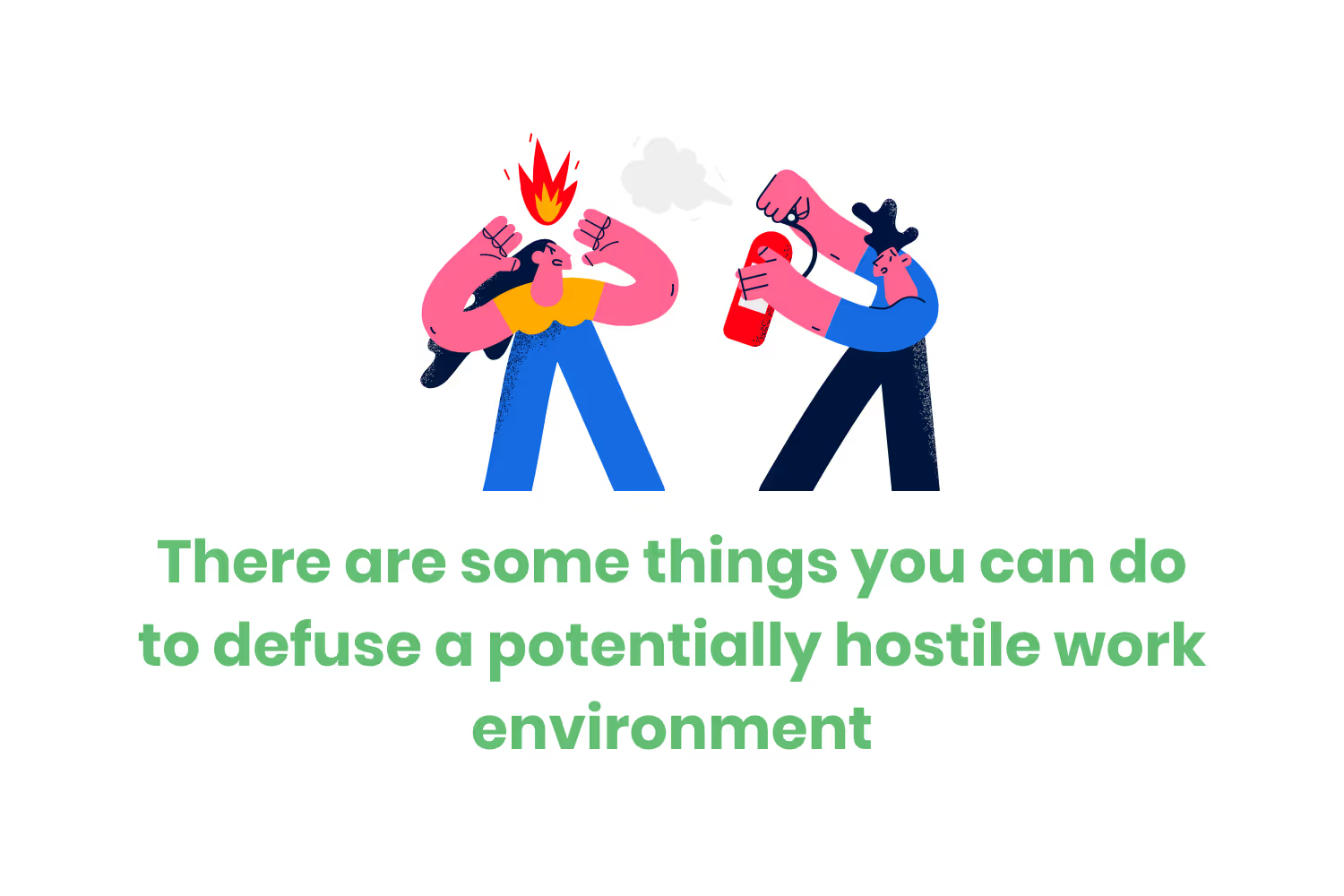
Listening to someone patiently is a good way to calm them down. If that someone happens to be an employee, then listening to them can help them get back to a neutral state.
Once they calm down, they can tell you their story. Repeat the main points back to them so your coworker understands that you listened to their complaints and understand the issue. Feeling heard is one of the best ways to defuse the anger that may turn into hostility in the future.
When confronted with something negative, people tend to get defensive. Although this is a natural reaction, sometimes it can backfire. The more you deny something or the more offensive you are, the more you will seem in the wrong.
If an employee criticizes their coworker’s assumptions, that coworker shouldn’t start explaining themselves right away or denying their actions. Listen and ask questions to get the true story.
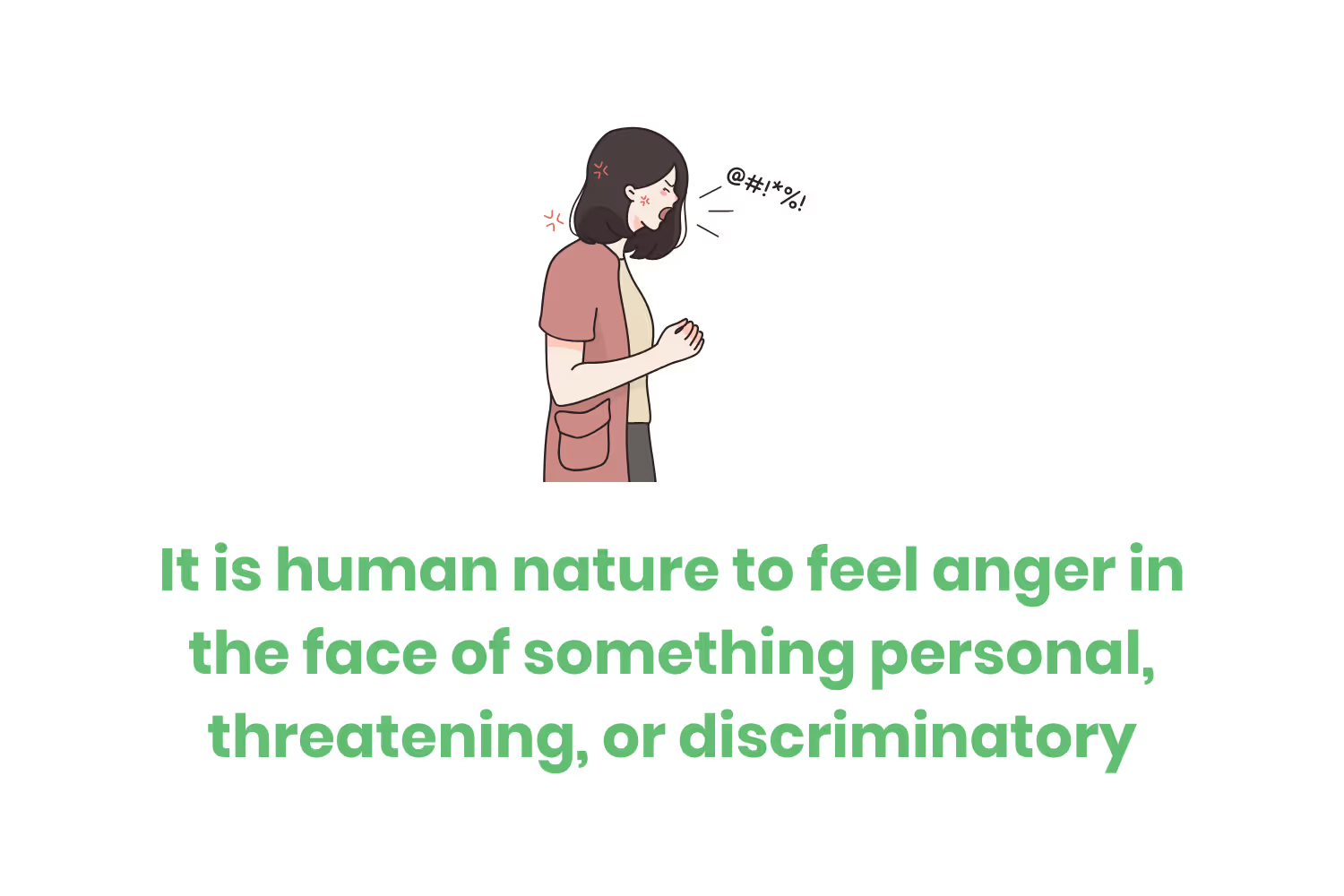
Just like defensiveness, anger can create a hostile work environment. It is human nature to feel anger in the face of something personal, threatening, or discriminatory. Oftentimes, this anger is counterproductive because you lose control of yourself and your rationality. Showing a reaction can destroy credibility. The longer someone stays calm, the more in control they are of the situation.
Hostility in the workplace doesn’t have to be so obvious. Passive aggressiveness is a means to discriminate against someone without being obvious. Instead of reacting to this behavior, challenge the behavior by questioning it.
If the passive aggressiveness takes on the form of questions, ask them to elaborate and explain what they mean. If this form of hostility takes the form of notes, emails, and other physical/digital means, bring a trusted coworker to ask the coworker about their behavior. Challenging the assumption behind the behavior ensures that you expose the implications of their behavior.
Conclusion
As you can see, there are many investigation questions for hostile work environments. All of them can help the appointed investigator get to the bottom of the complaint.
If you find yourself dealing with workplace hostility, you must file a complaint. Make note of the situations around you, especially if they might be illegal harassment. These situations should always get reported to management or law enforcement, no matter the consequences or threats against you.
The best way to deal with hostile work environments is to stop them from happening in the first place. Anti-harassment training is the best way to curb hostility in the workplace. Investigators also need the training to conduct appropriate investigations.
Emphasize your product's unique features or benefits to differentiate it from competitors
In nec dictum adipiscing pharetra enim etiam scelerisque dolor purus ipsum egestas cursus vulputate arcu egestas ut eu sed mollis consectetur mattis pharetra curabitur et maecenas in mattis fames consectetur ipsum quis risus mauris aliquam ornare nisl purus at ipsum nulla accumsan consectetur vestibulum suspendisse aliquam condimentum scelerisque lacinia pellentesque vestibulum condimentum turpis ligula pharetra dictum sapien facilisis sapien at sagittis et cursus congue.
- Pharetra curabitur et maecenas in mattis fames consectetur ipsum quis risus.
- Justo urna nisi auctor consequat consectetur dolor lectus blandit.
- Eget egestas volutpat lacinia vestibulum vitae mattis hendrerit.
- Ornare elit odio tellus orci bibendum dictum id sem congue enim amet diam.
Incorporate statistics or specific numbers to highlight the effectiveness or popularity of your offering
Convallis pellentesque ullamcorper sapien sed tristique fermentum proin amet quam tincidunt feugiat vitae neque quisque odio ut pellentesque ac mauris eget lectus. Pretium arcu turpis lacus sapien sit at eu sapien duis magna nunc nibh nam non ut nibh ultrices ultrices elementum egestas enim nisl sed cursus pellentesque sit dignissim enim euismod sit et convallis sed pelis viverra quam at nisl sit pharetra enim nisl nec vestibulum posuere in volutpat sed blandit neque risus.

Use time-sensitive language to encourage immediate action, such as "Limited Time Offer
Feugiat vitae neque quisque odio ut pellentesque ac mauris eget lectus. Pretium arcu turpis lacus sapien sit at eu sapien duis magna nunc nibh nam non ut nibh ultrices ultrices elementum egestas enim nisl sed cursus pellentesque sit dignissim enim euismod sit et convallis sed pelis viverra quam at nisl sit pharetra enim nisl nec vestibulum posuere in volutpat sed blandit neque risus.
- Pharetra curabitur et maecenas in mattis fames consectetur ipsum quis risus.
- Justo urna nisi auctor consequat consectetur dolor lectus blandit.
- Eget egestas volutpat lacinia vestibulum vitae mattis hendrerit.
- Ornare elit odio tellus orci bibendum dictum id sem congue enim amet diam.
Address customer pain points directly by showing how your product solves their problems
Feugiat vitae neque quisque odio ut pellentesque ac mauris eget lectus. Pretium arcu turpis lacus sapien sit at eu sapien duis magna nunc nibh nam non ut nibh ultrices ultrices elementum egestas enim nisl sed cursus pellentesque sit dignissim enim euismod sit et convallis sed pelis viverra quam at nisl sit pharetra enim nisl nec vestibulum posuere in volutpat sed blandit neque risus.
Vel etiam vel amet aenean eget in habitasse nunc duis tellus sem turpis risus aliquam ac volutpat tellus eu faucibus ullamcorper.
Tailor titles to your ideal customer segment using phrases like "Designed for Busy Professionals
Sed pretium id nibh id sit felis vitae volutpat volutpat adipiscing at sodales neque lectus mi phasellus commodo at elit suspendisse ornare faucibus lectus purus viverra in nec aliquet commodo et sed sed nisi tempor mi pellentesque arcu viverra pretium duis enim vulputate dignissim etiam ultrices vitae neque urna proin nibh diam turpis augue lacus.




